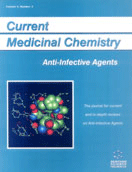Abstract
βlactamases are bacterial enzymes highly involved in resistance to βlactam antibiotics. They have demonstrated to be structurally very flexible. Amongst them, Amblers class A enzymes are widely spread and has revealed an unbelievable plasticity of their structure including their active site. From the ancestral plasmidmediated βlactamases: TEM-1, TEM-2 and SHV-1, a large number of Extended-Spectrum- (ESBL) and Inhibitor- Resistant- (IRBL) βlactamases have been identified. Surprisingly few narrow-spectrum variant enzymes were also identified. By the end of 2003, more than 120 TEM- and more than 50 SHV-mutant enzymes were reported from clinical isolates. They differ from the parental enzymes by a rather small number of amino acid substitutions located at a large number of possible locations. Some of these substitutions are critical for modification of the catalytic properties and have been often well explored, mostly by directed mutagenesis: the “major substitutions”, whereas others seem to be poorly related with these properties: the “minor substitutions”. The possible role of these substitutions is discussed in function of their location in the crystal structures of some of these enzymes.
Keywords: penicillin-hydrolyzing enzymes, lactamase family, plasmid, antibiotics, coding region, promoter region
 5
5

